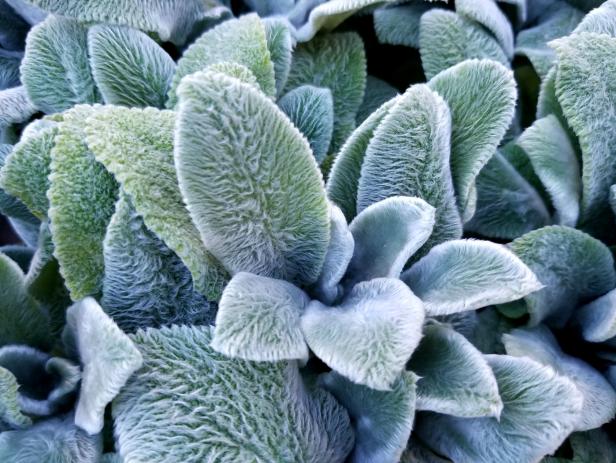Best Purple Heart Companion Plants For A Stunning Garden
Title: Best Purple Heart Companion Plants for a Stunning Garden
Introduction:
Purple heart (Tradescantia pallida) is a beautiful, low-maintenance plant that is easy to grow in a variety of conditions. It is known for its deep purple leaves and trailing growth habit, making it a great choice for hanging baskets, borders, and groundcovers.
Purple heart is also a relatively hardy plant that can tolerate full sun to partial shade and a variety of soil types. It is drought-tolerant once established and does not require a lot of fertilizer.
One of the best things about purple heart is its versatility. It can be paired with a variety of other plants to create stunning garden combinations. In this blog post, we will discuss some of the best companion plants for purple heart.
Main Content:
Companion Plants by Color:
- Purple: Purple heart pairs well with other purple-leaved plants, such as Persian shield (Strobilanthes dyerianus), coleus, and lantana. These plants will create a bold and colorful display in your garden.

- Green: Purple heart can also be paired with green-leaved plants, such as asparagus fern, sweet potato vine, and creeping Jenny. These plants will provide a contrast to the purple leaves of the purple heart plant and create a more subtle and elegant look.

- Yellow: Purple heart can also be paired with yellow-flowering plants, such as marigolds, nasturtiums, and sunflowers. These plants will add a pop of color to your garden and create a cheerful and welcoming atmosphere.



- White: Purple heart can also be paired with white-flowering plants, such as petunias, daisies, and lilies. These plants will create a soft and delicate look in your garden.

Companion Plants by Texture:
- Smooth: Purple heart has smooth, glossy leaves. It can be paired with plants that have textured leaves, such as coleus, lantana, and sweet potato vine. These plants will add interest and variety to your garden.
- Velvety: Purple heart also has velvety leaves. It can be paired with other plants that have velvety leaves, such as pansies, begonias, and impatiens. These plants will create a soft and luxurious look in your garden.
- Hairy: Purple heart can also be paired with plants that have hairy leaves, such as lamb's ear (Stachys byzantina) and sedum. These plants will add a touch of whimsy and charm to your garden.


Companion Plants by Height:
- Low-Growing: Purple heart is a low-growing plant. It can be paired with other low-growing plants, such as creeping Jenny, sweet alyssum, and pansies. These plants will create a lush and groundcover-like effect in your garden.
- Medium-Growing: Purple heart can also be paired with medium-growing plants, such as coleus, lantana, and marigolds. These plants will add height and interest to your garden.
- Tall-Growing: Purple heart can also be paired with tall-growing plants, such as sunflowers, zinnias, and hollyhocks. These plants will add drama and height to your garden.
Conclusion:
Purple heart is a beautiful and versatile plant that can be paired with a variety of other plants to create stunning garden combinations. By considering the color, texture, and height of the plants you choose, you can create a garden that is both visually appealing and functional.
Purple heart plants are beautiful and versatile, but they can be even more stunning when paired with the right companion plants. Some of the best companion plants for purple heart include:
- Golden creeping Jenny (Lysimachia nummularia 'Aurea')
- Coleus (Solenostemon scutellarioides)
- African marigold (Tagetes erecta)
- Vinca (Catharantheus roseus)
- Four o'clocks (Mirabilis jalapa)
- Scaveola (Scaevola aemula)
- Mexican petunia (Ruellia brittoniana)
These plants all have different colors, textures, and shapes, which can create a visually appealing and interesting display. They also have similar growing requirements, so they can be planted together without any problems.
To learn more about purple heart companion plants, visit Home Gardening.
FAQ of purple heart companion plants
- What are some good companion plants for purple heart?
Purple heart plants are relatively low-maintenance and can be grown in a variety of conditions. They prefer full sun to partial shade and moist, well-drained soil. Purple heart plants can be grown in containers or in the ground. When choosing companion plants for purple heart, it is important to consider the plant's sunlight, water, and soil requirements. Some good companion plants for purple heart include:
* Golden creeping Jenny (Lysimachia nummularia 'Aurea'): This plant has bright yellow leaves that contrast nicely with the purple leaves of purple heart. Golden creeping Jenny is also a low-maintenance plant that can tolerate full sun to partial shade.
* Four o'clocks (Mirabilis jalapa): These plants have fragrant flowers that bloom in the evening. Four o'clocks can tolerate full sun to partial shade and prefer moist soil.
* Lantana (Lantana montevidensis): This plant has brightly colored flowers that bloom all summer long. Lantana can tolerate full sun to partial shade and prefers moist soil.
* Mexican petunia (Ruellia brittoniana): This plant has purple flowers that bloom all summer long. Mexican petunia can tolerate full sun to partial shade and prefers moist soil.
* Vinca (Catharanthus roseus): This plant has glossy green leaves and white, pink, or purple flowers. Vinca can tolerate full sun to partial shade and prefers moist soil.
- What are some tips for planting purple heart with other plants?
When planting purple heart with other plants, it is important to consider the size of the plants. Purple heart plants can grow to be 12-18 inches tall and wide, so it is important to plant them with other plants that have similar growth habits. It is also important to consider the color of the plants. Purple heart plants have dark purple leaves, so it is a good idea to plant them with other plants that have complementary colors. For example, you could plant purple heart with plants that have yellow, orange, or pink flowers.
- How do I care for purple heart companion plants?
The care requirements for purple heart companion plants will vary depending on the specific plant. However, most companion plants for purple heart require full sun to partial shade, moist soil, and regular watering. It is important to fertilize companion plants every few weeks during the growing season.
- How do I propagate purple heart plants?
Purple heart plants can be easily propagated by stem cuttings. To propagate a purple heart plant, simply cut a 4-6 inch stem from the plant and remove the lower leaves. Plant the stem in a pot of moist potting mix and place it in a warm, sunny location. The stem should root in 2-4 weeks.
Post a Comment for " Best Purple Heart Companion Plants For A Stunning Garden"